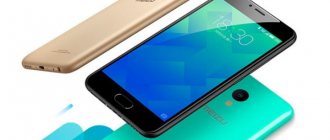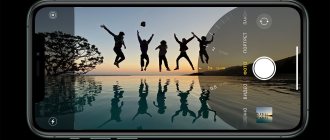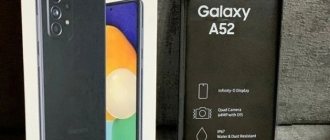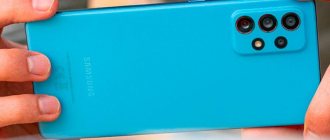It is actually very interesting to follow the development of Meizu. The fact is that this company is noticeably different from other Chinese smartphone manufacturers. Meizu understands that it primarily has to compete with other rapidly growing Chinese companies, and therefore is trying to stand out from them. How to do it? Meizu decided to try to give people not only high-quality, but also unusual smartphones in terms of software, which in their capabilities and characteristics can easily compete with more famous competitors and at the same time cost reasonable money. It's safe to say it worked.
For example, the Meizu M8 model, which went on sale in early 2009 and is based on the Windows CE 6.0 operating system, at one time seemed fantastically thought out compared to devices running Windows Mobile. This was a success for a start-up smartphone manufacturer - the company sold more than fifty thousand devices per month. Meizu managed to attract attention - so much so that Apple itself requested to stop selling the M8 due to the obvious similarities with the iPhone 2G/3G. In 2011, the next model entered the arena - M9. It was already based on Android, on top of which the proprietary Flyme OS shell was preinstalled. The peculiarity of this model was that it played on equal terms with the then flagship Samsung - the first Galaxy S, which appeared in mid-2010. Since then, Meizu has released a smartphone a year - well, just like Apple - each time having the only current and at the same time flagship model. This was the case until recently.
Meizu gained enough experience and courage and decided (perhaps also following the example of the company they have always looked up to) to expand the line of existing smartphones. Recently, the company showed three devices at once. The 2013 flagship – MX3 – has been replaced by the expected Meizu MX4, and for those who want a little more and a little cooler, the MX4 Pro is offered. This smartphone is notable for the fact that it not only quite successfully competes with the current flagships of other companies, like the MX4, but also surpasses them in certain parameters, and at the same time does not cost as much as it could.
However, all this is the hi-end segment, and most recently the company has released its first mid-range device – we are talking about the M1 Note model. Its official cost is only sixteen thousand rubles for the version with 16 GB of built-in flash memory ($249 in China). Agree, in modern realities this is quite a little for a smartphone. Logically, it should be seriously inferior to the MX4 and MX4 Pro - significantly more expensive devices.
⇡#Technical characteristics
| Meizu M1 Note | Meizu MX4 | Meizu MX4 Pro | |
| Touch screen | 5.5 inches, 1920 × 1080 pixels, IPS; Capacitive, up to 10 simultaneous touches | 5.36 inches, 1920 × 1152 pixels, IPS; Capacitive, up to 10 simultaneous touches | 5.5 inches, 2560 × 1536 pixels, IPS; Capacitive, up to 10 simultaneous touches |
| Air gap | No | ||
| Protective glass | Corning Corilla Glass 3 with oleophobic coating and polarizing filter | ||
| Factory film | No | ||
| CPU | MediaTek MT6752: Eight cores ARM Cortex-A53 (ARMv8), frequency 1.7 GHz; 28 nm process technology; Support for 64-bit computing | MediaTek MT6595: four cores ARM Cortex-A17 (ARMv7), frequency 2.2 GHz + four cores ARM Cortex-A7 (ARMv7), frequency 1.7 GHz; 28 nm process technology | Samsung Exynos 5430: four cores ARM Cortex-A15 (ARMv7), frequency 2 GHz + four cores ARM Cortex-A7 (ARMv7), frequency 1.5 GHz 20 nm process technology |
| Graphics controller | Mali T760 MP2, 700 MHz | Imagination Technologies Power VR G6200MP4, 600 MHz | Mali T628 MP6, 600MHz |
| RAM | 2 GB LPDDR3-1600 | 2 GB LPDDR3-1600 | 3 GB LPDDR3-1600 |
| Flash memory | 16/32 GB (without memory card slot) | 16/32/64 GB (without memory card slot) | 16/32/64 GB (without memory card slot) |
| Connectors | 1 × Micro-USB 2.0 1 × 3.5 mm headset jack 1 × Micro-SIM | 1 × Micro-USB 2.0 1 × 3.5 mm headset jack 1 × Micro-SIM | 1 × Micro-USB 2.0 1 × 3.5 mm headset jack 1 × Micro-SIM |
| cellular | 2G/3G/4G Two SIM cards in micro-SIM format | 2G/3G/4G One SIM card in micro-SIM format | 2G/3G/4G One SIM card in micro-SIM format |
| Cellular connection 2G | GSM/GPRS/EDGE 900/1800 MHz | GSM/GPRS/EDGE 850/900/1800/1900 MHz | GSM/GPRS/EDGE 850/900/1800/1900 MHz |
| Cellular 3G | HSPA+ (42 Mbps) 900/2100 MHz | DC-HSPA+ (42 Mbps) 850/900/1900/2100 MHz | DC-HSPA+ (42 Mbps) 850/900/1900/2100 MHz |
| Cellular 4G | LTE Cat. 4 (150Mbps) band 1, 3, 38, 41 | LTE Cat. 4 (150 Mbps) band 1, 3, 7 | LTE Cat. 4 (150 Mbps) band 1, 3, 7 |
| WiFi | 802.11a/b/g/n, 2.4 and 5 GHz | 802.11a/b/g/n/ac, 2.4 and 5 GHz | 802.11a/b/g/n/ac, 2.4 and 5 GHz |
| Bluetooth | 4.0 | ||
| NFC | No | No | Yes (NXP PN65T) |
| IR port | No | ||
| Navigation | GPS, A-GPS, GLONASS | GPS, A-GPS, GLONASS | GPS, A-GPS, GLONASS, BeiDou |
| Sensors | Light Sensor, Proximity Sensor, Accelerometer/Gyroscope, Hall Sensor (Digital Compass), Gravity Sensor, Pedometer | Light Sensor, Proximity Sensor, Accelerometer/Gyroscope, Hall Sensor (Digital Compass), Gravity Sensor, Pedometer | Light Sensor, Proximity Sensor, Accelerometer/Gyroscope, Hall Sensor (Digital Compass), Gravity Sensor, Pedometer, Fingerprint Scanner |
| Main camera | 13 MP (4192 × 3104), back-illuminated matrix; Autofocus, LED flash | 20.7 MP (5248 × 3936), Sony Exmor RS (IMX208) matrix with back illumination; Autofocus, LED flash | 20.7 MP (5248 × 3936), Sony Exmor RS (IMX208) matrix with back illumination; Autofocus, LED flash |
| Front-camera | 5 MP (2576 x 1936), OmniVision OV5670 matrix with back illumination | 2.1 MP (1920 × 1080), Sony Exmor R back-illuminated sensor | 5 MP (2592 × 1944), OmniVision OV5693 matrix with back illumination |
| Nutrition | Non-removable battery 11.93 Wh (3140 mAh, 3.8 V) | Non-removable battery 11.78 Wh (3100 mAh, 3.8 V) | Non-removable battery: 12.73 Wh (3350 mAh, 3.8 V) |
| Wireless charger | Not supported | ||
| Size | 151 × 75 mm Case thickness 8.9 mm | 144 × 75 mm Case thickness 8.9 mm | 150 × 77 mm Case thickness 9 mm |
| Weight | 145 g | 147 g | 158 g |
| Housing protection | No | ||
| operating system | Android 4.4.4 KitKat Own shell FlymeOS 4.2 | Android 4.4.2 KitKat Own shell FlymeOS 4.0 | Android 4.4.4 KitKat Own shell FlymeOS 4.1 |
| Current price | 15,990 rubles for the 16 GB version 17,990 rubles for the 32 GB version | 23,990 rubles for the 16 GB version 25,990 rubles for the 32 GB version | 30,990 rubles for the 16 GB version 32,990 rubles for the 32 GB version |
Meizu M1 Note – information about the system and hardware according to the CPU-Z application
⇡#About S-PEN
It's time to remember why this particular Galaxy is called Note, and take out from its secluded cavity a rather conveniently shaped stylus, designed to work with a capacitive screen and called the S-Pen. Experienced mobile device users can start jumping on the spot, because it works across the entire system and completely replaces the finger - the stylus can be used to press any icons and easily type text on the keyboard. However, you still have to take off your gloves in the cold - firstly, the stylus sits quite firmly in the slot and can often be removed from there only with the help of your nails, and secondly, the touch buttons are beyond its control.
But the stylus is not intended for this at all, but for the S Memo application, which permanently occupies a central position in the dock and is an editor of handwritten notes with the ability to insert pictures and text, as well as a fairly wide selection of tools (brushes, pencils, etc.) . Despite this, S Memo lags behind its counterpart in the HTC Flyer tablet in terms of quality due to the lack of synchronization with Evernote. Against the backdrop of real user experience, Samsung's promotional video makes you bang your head against the wall - how can you, ahem, promote a function designed as strange as possible??
It turns out that on the S-Pen, closer to the tip, there is a very invisible, inconveniently located and not highlighted button with a very tight movement. If you hold it down and double-click on the screen, the S Memo Lite widget will open, in which you can write down an urgent thought that comes to mind. If you press and hold it and simultaneously point the stylus at the screen, the system will take a screenshot, which can be immediately edited and provided with graphic notes.
Unfortunately, this option seems completely unintuitive, and it is completely impossible to understand the principle of operation from advertising videos, as well as to immediately detect the treasured button. As a result, the S-Pen is just a pleasant reminder of the old days for oldfags.
⇡#Appearance and ergonomics
We have already said more than once that Meizu is inspired by Apple’s design and borrows certain “tricks” for its devices from the Cupertino team. M1 Note in this case was no exception. It is noteworthy that for the younger model the design was borrowed not from the iPhone 6 or 6 Plus, as was the case with the MX4/MX4 Pro, but from... the budget iPhone 5c.
Meet Meizu M1 Note
Believe me, we are not trying to discern an “apple” where there is none: it’s just that there are a lot of parallels that can be drawn between the 5c and the M1 Note: both are made of glossy plastic, have a similar corner radius, similar shapes and key layout... except that the device is from Meizu is noticeably larger - it has a 5.5-inch display versus four inches for the iPhone 5c. Well, the point here is that Apple has not yet updated the budget device. The M1 Note's screen occupies approximately 72.9% of the front surface area, which is quite good - the side frames around the display are quite narrow.
Meizu even adopted the “trick” of bright body colors: the M1 Note comes in white, green, yellow, blue and red
In theory, it is possible to use a smartphone with one hand, but before buying it is better to hold it in your hands - it may be too big, and it does not fit in every pocket. The gadget weighs moderately - 145 grams, the thickness of the case is also within the normal range - 8.9 millimeters. At the top of the front panel there is a front five-megapixel camera lens and a slot for the earpiece.
Meizu M1 Note – front panel
The M1 Note is equipped with the familiar touch key at the bottom of the front panel. Its distinctive feature is that with its help you can not only return to the main screen, but also lock the device with a long press.
Meizu M1 Note – center key
We have no comments regarding the ergonomics of the smartphone. All connectors and keys are in their standard places for an Android smartphone - it’s very easy to get used to the gadget.
Meizu M1 Note – side view
The volume keys are located on the left side, right under the middle finger. On the top edge there is a universal 3.5 mm audio jack and a power/lock button for the device. It’s not difficult to reach the latter, but the need for this appears only when you need to reboot the device. You can “wake up” the device by double tapping on the screen.
Meizu M1 Note – side ends
On the right side there is a combined slot for two Micro-SIM cards. It opens using the usual paperclip key. The Micro-USB connector is located at the bottom end. There is also a slot for an external speaker. Its location is very good - the loudspeaker does not overlap, even if the smartphone is lying on the table.
Meizu M1 Note – bottom end
The M1 Note has a non-separable body. The back panel is quite easily soiled, it is prone to collecting “fingers” and generally gets dirty quite quickly. Its surface is glossy, which is why the smartphone constantly tries to slip out of your hands—in this case, you can’t do without a case. On the back panel there is a 13-megapixel rear camera lens and a dual LED flash. The device is assembled well - there are no backlashes or creaks. However, if you press on the front panel, you can see colored streaks. Obviously, the matrix is not protected in the best way.
Equipment Meizu m1
The manufacturer has always offered its customers a very meager package, which contained only all the essentials. Oddly enough, they made an exception for this model, offering the following equipment: the smartphone itself, documentation, microUSB cable, 2A charger, and also a pin with which you can easily access the SIM card tray. Headsets and protective bumpers are not included in the kit, although this may be for the better, because manufacturers often include accessories that are not of the best quality.
⇡#Display
As we said, the M1 Note has a 5.5-inch screen. It is noteworthy that, unlike other Meizu smartphones, its resolution is quite standard - Full HD (1080 × 1920 pixels). Accordingly, the aspect ratio is universal - 16:9, and not 15:9, like the MX4 and MX4 Pro. The pixel density is quite high – 400.5 dots per inch. Individual dots cannot be seen, even if you bring the device close to your eyes - there is no talk of any “pixelation” effect in this case.
The device uses an IPS matrix made on an IGZO substrate - with an active layer of indium, gallium and zinc oxide, rather than amorphous silicon, which has a positive effect on response time. The matrix was produced by Sharp, a pioneer of IGZO displays. The M1 Note responds to touches with loose gloves. The device responds to taps very quickly and accurately, recognizing multi-touch gestures without difficulty. The smartphone supports up to ten simultaneous touches.
Meizu M1 Note – AnTuTu MultiTouch Test results
Despite the fact that we are talking about a mid-price smartphone, its screen is made “like in the best houses in Paris and London.” The front panel is covered with protective tempered glass Corning Gorilla Glass 3, which has already proven its right to exist more than once - it is almost not afraid of minor damage. There is no air gap between it and the matrix, which significantly reduces the number of unwanted reflections. A very effective polarizing filter also helps combat glare. Finally, the protective glass here has an oleophobic coating, making the device easy to clean from fine dirt and fingerprints. True, the oleophobic layer is not the best - the glass doesn’t quite feel like a “window”, but it’s not very pleasant.
Meizu is being modest again. The official website says that the maximum brightness of the white field of the M1 Note display is 450 cd/m2. Our tests, performed according to the method described in a separate article, showed that this is not the case. According to our data, the maximum luminosity of the white field is more than five hundred candelas per square meter. This means that the screen’s brightness reserve is very high – the information on the screen is clearly visible even in direct sunlight, and you will only need to “crank” the backlight level to the maximum in the most emergency situations. In the dark, the device is quite gentle on the eyes: the minimum display brightness is only 14 cd/m2. In general, you can use your smartphone in any conditions without straining your eyes.
The luminosity of the black field at the maximum backlight level is moderate - 0.48 cd/m2 (in this case, less is better). The black color lacks a little depth, it barely noticeably leans towards dark gray. The contrast, despite this, turned out to be very decent - 1050:1. Some Android flagships never dreamed of this.
The color temperature of shades of gray fluctuates around 6700 K. The deviation from the reference value of 6500 Kelvin is so small that it can be safely ignored. The whites on the M1 Note's screen look truly white, without any warm or cool tones.
The gamma curve of gray color almost completely coincides with the reference curve - minimal deviations do not count. All shades of gray on the M1 Note's display look correct. With the gamut of color components, the situation is much worse: all three curves - for blue, green and red - are noticeably raised in the middle and upper parts. This means that the halftones of the primary colors look a little brighter than they should.
Meizu M1 Note – smartphone screen color gamut (yellow triangle) compared to sRGB color space (white triangle)
The color gamut of the M1 Note display matches the reference sRGB color space - the triangle shape is almost perfect. Images on the screen are displayed plus or minus accurately; just as their authors intended. Perhaps Meizu engineers should have spent a little more time setting up the gamma curves.
⇡#About SCREEN
When the author first heard about a smartphone with a 5.3-inch screen diagonal, the first reaction was malicious curiosity - what kind of grain is there, the size of a pea? But Samsung outwitted everyone and cut a matrix for the Note with a champion resolution of 1280x800 - remember, until recently this was considered quite acceptable for a 15-inch laptop. As a result, we get not a champion, but quite acceptable 285 dots per inch. If you strain your eyes, you can see some grain, but overall the image looks smooth for such a large screen.
The screen protected by Gorilla Glass belongs to the HD Super AMOLED family, because its resolution is even higher than that of the Galaxy Nexus (1280×720 pixels), but not to Super AMOLED Plus - the subpixels here are organized according to the PenTile scheme (which gives us a third less subpixels due to alternating red and blue), and there are quite sharp-eyed people who can see the difference well. Well, for those who are not confused by such trifles, there is another clear sign - not particularly good viewing angles. The white background of the search page begins to turn deathly blue already at an angle of 40-50 degrees - well, to hell with it, a smartphone is a personal device.
⇡#Hardware and performance
Meizu M1 Note has a new MediaTek MT6752 system-on-chip. We haven’t tested smartphones running it yet, so we’ll tell you about it in detail. It includes eight new ARM Cortex-A53 cores operating at 1.7 GHz. Eight sounds serious, but you shouldn’t expect a crazy level of performance from the device: let us remember that the Cortex-A53 processor core replaced the far from fastest Cortex-A7.
Official slide from ARM describing the Cortex-A53 cores
ARM Cortex-A53 cores support 64-bit computing and, accordingly, have the latest ARMv8 instruction set. They also feature reduced energy consumption. According to the company's statements, the A53 core consumes four times less power compared to Cortex-A9 cores at the same performance level. In general, Cortex-A53 are considered low-end cores in the modern ARM line. That does not prevent them from being quite advanced: for example, commands in A53 are executed out of sequence. The MediaTek MT6752 chip is made using a gradually aging 28-nanometer process technology. MediaTek says that this system-on-chip is designed for mid-upper smartphones. That is, just for Meizu M1 Note.
The device has two gigabytes of RAM. Of course, fast LPDDR3-1600 modules are used. The volume of built-in flash memory, as Meizu likes, is fixed - 16 or 32 GB. The M1 Note does not have a memory card slot.
The performance level of MediaTek MT6752 is sufficient to ensure smooth operation of a smartphone with a Full HD display. The M1 Note functions really smoothly. The animation of the operating system is displayed without the slightest twitching, and the gadget does not slow down during everyday use. It also copes with everyday tasks - web surfing, playing videos, viewing documents - without any problems.
The role of the graphics controller in the MT6752 is played by the ARM Mali-T760 MP2 chip, operating at a frequency of 700 MHz. The smartphone is not very suitable for games - the M1 Note copes with two-dimensional arcade games without difficulty, but with the rest... In fact, even resource-intensive applications like the eighth Asphalt also work well if you set the graphics settings to minimum. Otherwise, they can and probably will slow down.
The built-in multimedia player knows many common video formats and easily plays videos with resolutions up to Full HD. The performance level of the Meizu M1 Note is very good for a mid-range smartphone.
⇡#About the CAMERA
The problem with almost all tablets is their weak cameras. Samsung decided to rectify the situation by designing the first version of the Tab 10.1 with an 8-megapixel module, but quickly came to their senses, and the thin version was released with a soapy 3-megapixel module.
In Note, the Koreans are retreating from the edge of the abyss, and this is understandable - from a device intended to be the only one and replace everything, the quality of the pictures is expected to be appropriate. According to our impressions, Samsung can still be given credit - for most people this camera will be quite suitable as their main one. Separately, we note the ability to shoot video with a resolution of 1080p - obviously, with such a screen and such a processor, it would be a shame to exchange for something less.
If we ignore the actual quality of pictures and videos, we would like to praise the Note (like all other Android-based Samsung devices) for its simple and intuitive interface and the presence of all the necessary settings, but we would criticize it for the lack of a hardware shutter button.
⇡#Communication
The MediaTek MT6752 module supports data transmission in LTE networks, that is, M1 Note in theory can work in fourth generation networks. This is not officially stated anywhere, since only bands 1, 3, 38 and 41 are supported. There is no support for the most important band for Russia, Band 7. Nevertheless, some operators in the Russian Federation - for example, MTS in Moscow - have support for one of these frequencies. Accordingly, LTE on the M1 Note within Moscow will work for subscribers of this operator. The rest of the Big Three operators have so far only announced the construction of 4G networks operating at these frequencies. Therefore, in the regions the situation is individual - you will have to look at each operator separately. It turns out that LTE in Meizu M1 Note is a pleasant bonus for “selected” owners: the smartphone does not officially have 4G, but it may work for some. It is noteworthy that 3G in the M1 Note works with all Russian operators, while in its homeland the gadget can only transfer data in second-generation networks. But it works with two SIM cards.
The smartphone has a standard set of wireless interfaces: Wi-Fi, Bluetooth, GPS. There is no infrared port for controlling household appliances or NFC. The first one, in general, is not allowed within the class, but the second one would be quite appropriate. However, in fairness, we note that the Meizu MX4 does not support Near Field Communication either, which seems much more strange. The GPS+GLONASS module is responsible for navigation in the device.
| Meizu M1 Note – AndroiTS outdoor test results | ||
The navigation module works quite quickly. Half a minute after the “cold” start, the device detected seven satellites and was guided by them. The navigation error radius was around four to five meters. A very good result. During a week of testing, the gadget showed itself quite well as a car navigator - in different conditions it really quickly determined its location.
⇡#About the BATTERY
The second thing in the Galaxy Note that sends other smartphones to a break is the battery. The 3.7-volt “bulge” is actually only five millimeters wider, a couple of millimeters longer, and the same amount thicker than the HTC Mozart battery that came to hand for comparison. However, the capacity is almost twice as large - 9.25 Wh. As a result, the Galaxy Note takes significantly longer to charge than conventional smartphones, but it still manages to do it after midnight.
As you know, everyone's operating conditions are very different, but those whose standard smartphones barely survive the end of the day can count on a day and a half of pretty tough use.
⇡#Camera
The rear camera in the smartphone is 13-megapixel, with autofocus. A back-illuminated matrix manufactured by Samsung is used. It is complemented by dual LED flash with different color temperatures, designed to “even out” color balance, including skin tones in portraits under mixed lighting.
Meizu M1 Note – main camera
With sufficient lighting, of course, the main camera of the M1 Note takes very good pictures. The photos are moderately saturated and detailed, the contrast is at a good level. Sharpness is decent across the entire frame, and there is not as much noise as there could be. The color rendition of the photographs is realistic - at least more accurate than that of the LG G3. Autofocus works quickly.
Shooting night scenes is not very good for the smartphone. The picture turns out quite dark, with a lot of artifacts. The difference with the photo taken on the LG G3 is striking. In low light, the camera focuses noticeably slower than in daylight or at least room lighting. The information content of most photographs taken in the dark leaves much to be desired.
The front camera of the device is five megapixel. With its help, you can take quite decent self-portraits even in the dark - the picture turns out to be noisy, which is quite expected, but readable. There is no shame in uploading selfies from Meizu M1 Note to social networks. Well, if you are not at all ashamed to upload selfies to social networks.
Bottom line
At the moment, Meizu m1 price is only 11,000 rubles and this is an excellent option for that kind of money. When purchasing, you get a device with a high-quality display, good sound in headphones, decent cameras and excellent performance.
Meizu M5 Note. What can please the new generation of the popular smartphone?
Review of the Meizu M3 Note smartphone and its characteristics
Meizu Pro 6 Plus - the company has finally managed to create a flagship that is as close as possible to the title of ideal
Meizu M3S - excellent characteristics combined with an affordable price
Meizu U10 - a budget phone with a bright appearance and good performance
Review of the Meizu MX6 smartphone and its characteristics
Meizu M6 Note is the manufacturer's first budget phone with a Snapdragon processor - have the changes been beneficial?
Meizu M6 - the manufacturer no longer knows where to get new ideas and is copying itself
⇡#Autonomous work
The battery in the smartphone is quite capacious – 11.93 Wh (3140 mAh, 3.8 V). When used with average loads - half an hour of voice calls, one and a half to two hours of web surfing, 10-15 SMS/MMS and about an hour of communication in instant messengers like WhatsApp (with automatic adjustment of display brightness) - the device consistently survived until the end of the working day with battery remaining around 15-30%, depending on the usage scenario.
In continuous video playback mode at maximum backlight brightness, the device lasted a little longer than its older brothers - six hours and fifteen minutes before being completely discharged. Of course, a smartphone’s screen consumes the most energy, so in order to significantly extend the life of the battery, it is enough to reduce the backlight level to a quite comfortable quarter or third of the maximum. Meizu still does not have any advanced energy saving settings. Unless the user can limit the work of the central processor and prohibit data transfer in the background. A full charging cycle from a standard 2 A device takes about three hours.
⇡#About POWER
We'll start this section with a small dose of reassuring (but very impressive) numbers for phallometric benchmarkers. Here she is:
| Quadrant Standard, points | Linpack Single Thread, MIPS | Linpack Multi Thread, MIPS | Nenamark 2, FPS |
| 4179 | 63,553 | 96,884 | 32,8 |
As for my own impressions of performance, it is absolutely adequate for this screen size. The author is not God knows what kind of gamer, but the smooth playback of HD movies inspires respect. Torrents can be downloaded directly to the connected device.
⇡#About OUTPUT
First, a personal opinion - the author really liked Note. Of course, it’s a huge pity that Samsung didn’t buy the excellent webOS from HP and release something similar on it, but the “plafond” was a success with Android 2.3. One can say even more - the 2.x branch is much better suited for this screen size than the “three”, and as for the “four”, one can only hope that the update will not come out.
It is impossible to unequivocally classify Note as “strictly for advanced users,” however, it is often precisely for such subscribers that the number of megabytes downloaded is much greater than the number of minutes spoken. It is web surfing that seems to be the main purpose of the N7000 - and perhaps also navigation and reading books. Using the Note as a phone is not just inconvenient (we repeat, it fits into a standard jeans pocket without any problems), but just a little... strange. It’s not for nothing that all my friends who are looking at this device are going to buy either a Bluetooth headset or a Bluetooth “watch” to accompany this sturdy device.
One sore point is the price. Based on Scandinavian news, we can assume that in our market the price will be “slightly higher than 30 thousand.” The traditional Android audience in Russia is definitely accustomed to a completely different price level. And yet, the combination of almost tablet-like capabilities and almost smartphone-like dimensions will certainly make more than one well-earning IT specialist see the Note as their ideal option - and no 10,000-ruble gap from their closest pursuers will stop them.
Links[edit]
- ^ a b Cheng, Roger. (2012-08-15) Samsung: 10 million Galaxy Notes sold in nine months | Mobile - CNET News. News.cnet.com. Retrieved July 10, 2013.
- Samsung announces Galaxy Note 10.1 at MWC
- "[ROM] [LineageOS14.1] [Nougat] NightOwl 20180824". XDA.
- "[ROM] [UNOFFICIAL] [9.0.0] LineageOS 16.0 - 20200614" . XDA.
- "Using Galaxy Note 1 in 2022 - that's what happened!" . YouTube.
- 32 GB
- ^ ab "Samsung Galaxy Note and Galaxy Nexus sport HD Super AMOLED - is the PenTile matrix bad for you?" . PhoneArena
. Retrieved September 2, 2016. - https://apps.fcc.gov/oetcf/eas/reports/ViewExhibitReport.cfm?mode=Exhibits&RequestTimeout=500&calledFromFrame=N&application_id=258095&fcc_id=%27A3LGTI9220%27 , ID = 1550585
- "Samsung Galaxy Note N7000". GSM Arena. Retrieved June 7, 2013.
- ^ ab "Samsung Announces Galaxy Nexus and Note Release Schedules". GSMArena. 2011-10-27.
- Chris Davis (10/27/2011). "Samsung's White Galaxy Note Revealed". SlashGear
. Retrieved December 11, 2011. - Zach Honig (2012-03-05). "'Berry pink' Galaxy Note coming soon". Engadget
. Retrieved August 29, 2012. - ^ ab "Samsung Galaxy Note Review". CNET
. CBS Interactive. Retrieved September 2, 2016. - ^ B s d e g h i J k l m p o “Samsung Galaxy Note N7000 review: Power Play”. GSMArena
. 2011-11-16. Retrieved December 11, 2011. - "Samsung Galaxy Note Android Phone". PC World Australia
. Retrieved December 4, 2011. - "Samsung Galaxy Note Review". Reliable reviews
. Retrieved September 2, 2016. - ^ abc Rick Henderson (2011-11-03). "Samsung Galaxy Note Review". Pocket pile
. Retrieved December 4, 2011. - Donald Melancon (2011-10-21). "Android Ice Cream Sandwich includes built-in stylus support". Engadget
. AOL. Retrieved November 13, 2011. - ^ ab Dan Grabham (09/01/2011). "Samsung Galaxy Note Review". Tehradar
. Retrieved September 27, 2011. - "How to Upgrade Samsung Galaxy Note to Ice Cream Sandwich". PC World (Australia)
. IDG. Retrieved September 2, 2016. - Yonut Arghire (2012-10-09). "Android 4.1 coming to Galaxy Note in South Korea". Softpedia. Retrieved October 22, 2012.
- SamMobile. "N7000UBLS4 - Galaxy Note Android 4.1.2 Jelly Bean TEST Firmware from Tel Cel Mexico". SamMobile
. Retrieved April 10, 2022. - ↑
Chris Davis (January 30, 2012). "AT&T Galaxy Note LTE goes on sale February 19 for $300". Slash Gear. Retrieved March 18, 2012. - Florin Troaca (February 14, 2012). "Samsung Galaxy Note launched in Canada by Rogers, Telus and Bell". Unwiredview.com. Retrieved March 18, 2012.
- ^ ab "Samsung Galaxy Note I717". GSMArena.com. Retrieved March 18, 2012.
- ^ ab "Samsung Galaxy Note I717 Review: Pushing the Boundaries". GSMArena.com. February 19, 2012. Retrieved March 18, 2012.
- Mat Smith (2011-12-29). "1 million Galaxy Notes shipped worldwide, US fans throw money at their screens". Engadget. Retrieved December 30, 2011.
- Miriam Joer (2012-01-09). "AT&T Galaxy Note Hands-On LTE Experience at CES 2012 (Video)". Engadget. Retrieved January 19, 2012.
- "Samsung hits a high note". Toronto Sun. 2012-04-05. Retrieved July 10, 2013.
- Over 7 million units of Samsung Galaxy Note have already been shipped, Archived September 13, 2012 at Archive.today. Tech.sc (06/01/2012). Retrieved July 10, 2013.
Galaxy Note5 (2015): The Swiss Army Knife of the Smartphone World
Released in 2015 as part of the annual update cycle, the Samsung Galaxy Note5 received noticeable improvements on all fronts. Of course, the processor has become faster, but most importantly, the design and finish have seriously changed.
The Galaxy Note 5 features a glass and metal design with a focus on ergonomics and ease of use. But, unfortunately, in the pursuit of comfort, it lost several valuable functions. Let's start with the fact that the Samsung Galaxy Note5 did not have a removable battery. Moreover, the smartphone also lacked a slot for a microSD card. Also, due to the design, the spring block would break if the S Pen was inserted incorrectly into the slot.
But despite all these problems, Galaxy Note5 broke the sales record for the series and became one of the most popular smartphones of that year.
Facts about Samsung Galaxy Note5:
- Galaxy Note 5 came with a glass back and a spring-loaded stylus. If you insert the stylus backwards, it gets jammed, which can lead to damage.
- Galaxy Note 5 also marks the beginning of the Galaxy Note series' use of built-in batteries.
Content
Infographics: key innovations of all
Galaxy Note series smartphones (2011): a bold decision
Galaxy Note 2 (2012): improved version
Galaxy Note 3 (2013): Best for Business
Galaxy Note 4 (2014): a realistic approach to problem solving
Galaxy Note Edge (2014): time to experiment
Galaxy Note5 (2015): The Swiss Army Knife of the Smartphone World
Galaxy Note7 (2016): crashes and fires
Galaxy Note8 (2017): revival of the series
Galaxy Note9 (2018): lack of innovation
Galaxy Note10 (2019): one smartphone, two sizes
Galaxy Note20 (2020): a bold look











